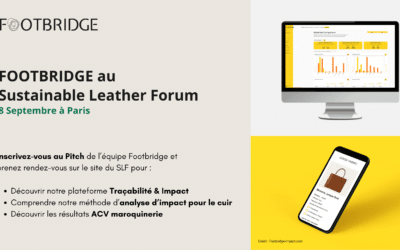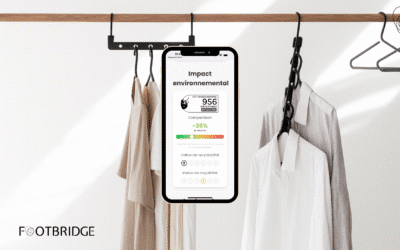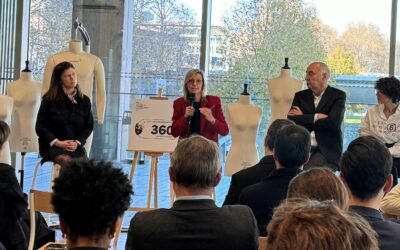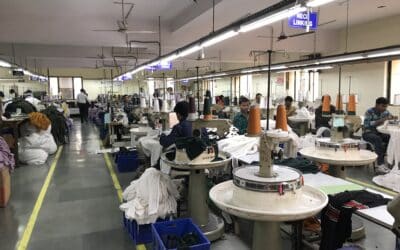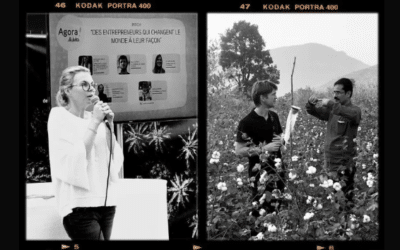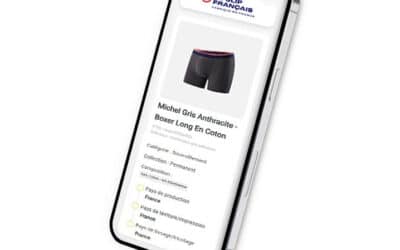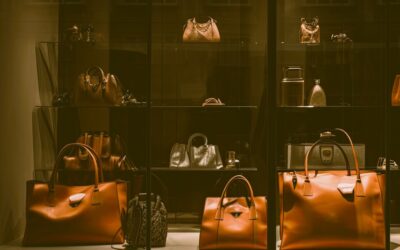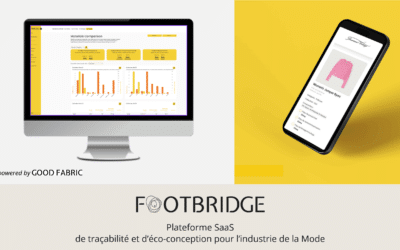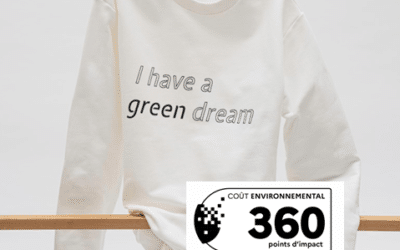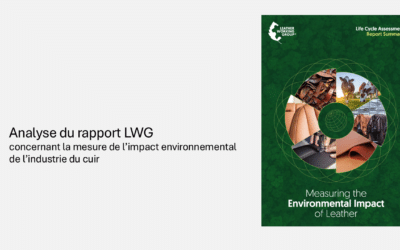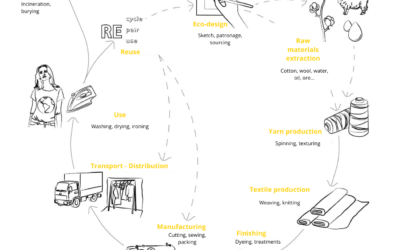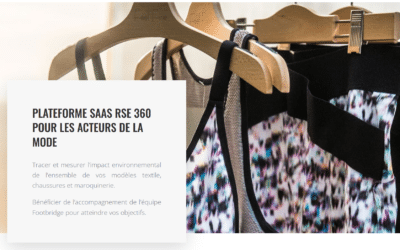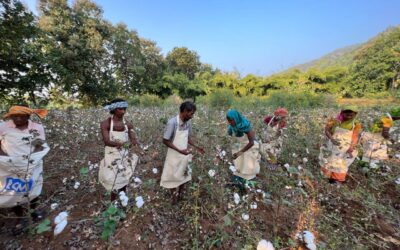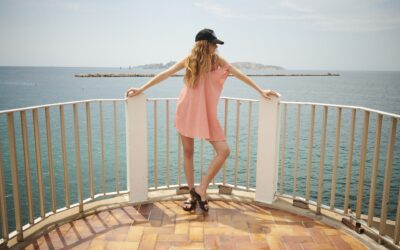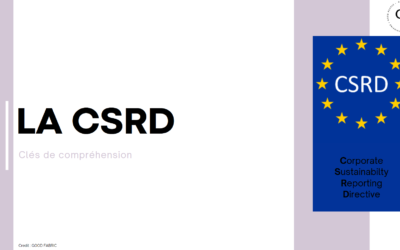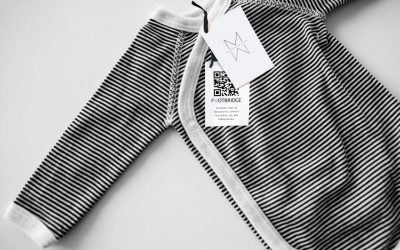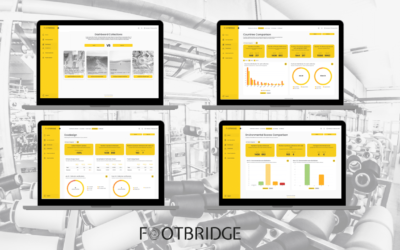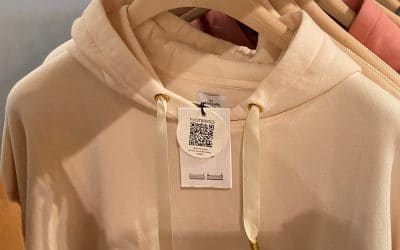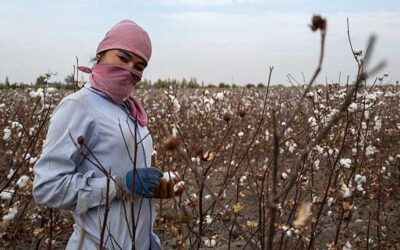On September 8, Footbridge will be present at the Sustainable Leather Forum (SLF), the benchmark event for the sustainable footwear, leather goods and leather industries. Every year, this event brings together professionals committed to a profound transformation of...
Blog FOOTBRIDGE
La révolution green est en marche. Retrouvez notre actu et nos articles
ESPR and Digital Product Passport: the new deal for fashion, textiles, footwear and leather goods
European regulations are making great strides towards making sustainable products the norm. With the ESPR (Ecodesign for Sustainable Products Regulation) and the Digital Product Passport (DPP), the European Union is imposing an unprecedented framework: defining, for...
Europe approves two environmental labelling schemes for clothing…
Matthieu Guinebault, journalist at FashionNetwork, has recently published two articles concerning the latest news on environmental textile labelling in the EU and France. Read on: Since May 14, 2025, several official communications have been published concerning the...
Forced labor: traceability as a lever for action
Forced labor remains a worrying reality in many global supply chains, particularly in the fashion industry. Faced with this situation, traceability is emerging as an essential tool for ensuring ethical and responsible practices. The Footbridge platform is positioned...
How do you achieve traceability in textiles?
A complete guide for fashion brands with Good Fabric and Footbridge Textile traceability is now a central issue for fashion brands wishing to meet consumer expectations, anticipate regulations, and control their environmental and social impact. It involves tracking...
Outsourcing CSR: a good or bad idea?
Corporate Social Responsibility first appeared in 1953 with Howard Bowen, who published Social Responsibilities of the Businessman. But CSR has really become a preoccupation for most companies since the late 2010s, under pressure from regulations, particularly in...
LE SLIP FRANÇAIS speeds up traceability with FOOTBRIDGE
Le Slip Français structures the traceability of its products by deploying the Footbridge platform. End-to-end traceability Le Slip Français is entering a new phase in its commitment to traceability. The project's ambition is to trace production chains right back to...
Leather LCA by LWG versus PEFCR Leather: what are the methodological differences?
The European Union is working on the environmental display of various products through the PEFCR (Product Environmental Footprint Category Rules). Among these, leather products remain a subject under study through PEFCR Leather. Private life-cycle analysis projects...
The benefits of a unified 360 CSR SaaS platform
FOOTBRIDGE is a SaaS CSR 360 platform offering unified traceability services, environmental impact calculations and compliance with French and European regulations for the textile, footwear and leather goods sectors. It's legitimate to ask what operational advantages...
From environmental labelling to environmental textile costs
On November 28, Agnès Pannier-Runacher, the French Minister for Ecological Transition, presented the latest developments in environmental textile labelling, ahead of a national consultation launched over the next few weeks. A decree, including an order setting out the...
Analysis of the report “Measuring the Environmental Impact of leather” by LWG
The Leather Working Group is a non-profit organization dedicated to reducing the impact of the leather industry, founded by companies such as Adidas, Clarks, Ikea, Nike, Marks & Spencer, Timberland... The organization, which has 2,000 members in 60 countries, has...
What a lca can identify: What a life cycle assessment reveals about your products
In the textile industry, sustainability has become an essential criterion for companies concerned about their environmental responsibility. Life Cycle Assessment (LCA) is emerging as an essential tool for assessing the ecological impact of products, from the...
Footbridge’s new traceability platform
The FOOTBRIDGE service offering includes a new traceability platform and a major update of automated impact calculations for textiles, footwear and leather goods. All 100% operated by GOOD FABRIC. Traceability + Impact « Since 2021, the year FOOTBRIDGE was launched,...
DDP and EUDR, the consequences for European fashion companies
The Digital Product Passport (DPP) and the European Union Deforestation Regulation (EUDR) are two key initiatives redefining the sustainability and transparency framework for European fashion companies. Companies now face critical challenges, as these regulations...
AMERICAN VINTAGE chooses FOOTBRIDGE
After working with GOOD FABRIC on CSR issues, AMERICAN VINTAGE naturally decided to use the FOOTBRIDGE platform to pursue the eco-design of its collections and meet regulatory requirements such as Agec. Under the guidance of founder Michaël Azoulay, the...
LCA for sustainable leather goods
On September 9, at the Sustainable Leather Forum in Paris, Louis-Marie Vautier presented the results of methodological work to calculate the environmental impact (LCA) of leather goods. The Footbridge team has been working on this project for over a year, in close...
Maison Longchamp deploys Footbridge
LONGCHAMP deploys FOOTBRIDGE to accelerate the eco-design of its collections.
CSRD 2024: The new sustainability reporting directive
The CSRD is part of the “Green Deal”, the EU’s plan to make Europe the 1st carbon-neutral continent by 2050. Every company involved will have to comply.
Ademe Method or PEF: How to navigate textile environmental labeling?
Ademe to present its method for environmental textile labelling. What’s the difference with the European eco-score and the PEFCR Apparel & Footwear method?
How to reduce the carbon footprint of your textile products?
The textile industry, with its massive carbon footprint, has become a focal point in current environmental debates. At Footbridge, we are aware of this issue and are committed to helping industry stakeholders understand and reduce the environmental impact of their...
Why is the textile industry so polluting?
When tackling the environmental impact of a garment, it’s crucial to understand the major impact factors as well as the real-world conditions at every stage of its manufacturing, use, and end-of-life.
Towards a more responsible company: The challenges and opportunities of CSRD
Over the past two decades, the fashion landscape has evolved towards a growing awareness of the environmental and social impact of companies. In this sense, the CSRD (Corporate Sustainability Reporting Directive) is emerging as a crucial step towards greater...
CSR Management Tools by FOOTBRIDGE
FOOTBRIDGE presents its new dashboards to make it easier to understand CSR issues and identify potential risks linked to the manufacture of collections.
Sustainable fashion, reality or greenwashing?
The fashion industry is one of the most polluting industries in the world, but you already knew that, right? In addition to massive water pollution, it significantly contributes to global warming, accounting for nearly 10% of global greenhouse gas emissions. The...
The new requirements with Article 13 of the AGEC law
Decree no. 2022-748, published in the French Official Journal on April 30, makes article 13 of the AGEC law immediately applicable to companies in the textile/clothing sector, in particular through the obligation to communicate the traceability of their products.
What is the purpose of the traceability label for textiles?
QR Codes will soon be appearing everywhere on clothing labels in the coming months and years. What are they for? Can we trust this information? Consumers’ demands for transparency are prompting players to provide more information about the manufacturing of their products. This becomes a strategic issue for brands, provided they have something to say.
Transparency: an app gives you all the information you need about how your clothes are made
Retrouvez l’article de Fashion United
BRANDS FACED WITH REPUTATIONAL RISK
The Uyghur scandal continues to reverberate around the world. Fashion Network's article "Uyghurs: what is the basis of the complaint against Inditex, Uniqlo, SMCP and Skechers?" is yet another example. Can a brand that claims to be "Conscious" manufacture part of its...

